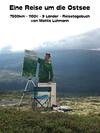Kitabı oku: «The Yosemite», sayfa 7
The Douglas Spruce
The Douglas Spruce (Pseudotsuga Douglasii) is one of the largest and longest-lived of the giants that flourish throughout the main pine belt, often attaining a height of nearly 200 feet, and a diameter of six or seven feet. Where the growth is not too close, the stout, spreading branches, covering more than half of the trunk, are hung with innumerable slender, drooping sprays, handsomely feathered with the short leaves which radiate at right angles all around them. This vigorous tree is ever beautiful, welcoming the mountain winds and the snow as well as the mellow summer light; and it maintains its youthful freshness undiminished from century to century through a thousand storms. It makes its finest appearance during the months of June and July, when the brown buds at the ends of the sprays swell and open, revealing the young leaves, which at first are bright yellow, making the tree appear as if covered with gay blossoms; while the pendulous bracted cones, three or four inches long, with their shell-like scales, are a constant adornment.
The young trees usually are assembled in family groups, each sapling exquisitely symmetrical. The primary branches are whorled regularly around the axis, generally in fives, while each is draped with long, feathery sprays that descend in lines as free and as finely drawn as those of falling water.
In Oregon and Washington it forms immense forests, growing tall and mast-like to a height of 300 feet, and is greatly prized as a lumber tree. Here it is scattered among other trees, or forms small groves, seldom ascending higher than 5500 feet, and never making what would be called a forest. It is not particular in its choice of soil: wet or dry, smooth or rocky, it makes out to live well on them all. Two of the largest specimens, as we have seen, are in Yosemite; one of these, more than eight feet in diameter, is growing on a moraine; the other, nearly as large, on angular blocks of granite. No other tree in the Sierra seems so much at home on earthquake taluses and many of these huge boulder-slopes are almost exclusively occupied by it.
The Incense Cedar
Incense Cedar (Libocedrus decurrens), already noticed among the Yosemite trees, is quite generally distributed throughout the pine belt without exclusively occupying any considerable area, or even making extensive groves. On the warmer mountain slopes it ascends to about 5000 feet, and reaches the climate most congenial to it at a height of about 4000 feet, growing vigorously at this elevation in all kinds of soil and, in particular, it is capable of enduring more moisture about its roots than any of its companions excepting only the sequoia.
Casting your eye over the general forest from some ridge-top you can identify it by the color alone of its spiry summits, a warm yellow-green. In its youth up to the age of seventy or eighty years, none of its companions forms so strictly tapered a cone from top to bottom. As it becomes older it oftentimes grows strikingly irregular and picturesque. Large branches push out at right angles to the trunk, forming stubborn elbows and shoot up parallel with the axis. Very old trees are usually dead at the top. The flat fragrant plumes are exceedingly beautiful: no waving fern-frond is finer in form and texture. In its prime the whole tree is thatched with them, but if you would see the libocedrus in all its glory you must go to the woods in midwinter when it is laden with myriads of yellow flowers about the size of wheat grains, forming a noble illustration of Nature's immortal virility and vigor. The mature cones, about three-fourths of an inch long, born on the ends of the plumy branchlets, serve to enrich still more the surpassing beauty of this winter-blooming tree-goldenrod.
The Silver Firs
We come now to the most regularly planted and most clearly defined of the main forest belts, composed almost exclusively of two Silver Firs–Abies concolor and Abies magnifica--extending with but little interruption 450 miles at an elevation of from 5000 to 9000 feet above the sea. In its youth A. concolor is a charmingly symmetrical tree with its flat plumy branches arranged in regular whorls around the whitish-gray axis which terminates in a stout, hopeful shoot, pointing straight to the zenith, like an admonishing finger. The leaves are arranged in two horizontal rows along branchlets that commonly are less than eight years old, forming handsome plumes, pinnated like the fronds of ferns. The cones are grayish-green when ripe, cylindrical, from three to four inches long, and one and a half to two inches wide, and stand upright on the upper horizontal branches. Full-grown trees in favorable situations are usually about 200 feet high and five or six feet in diameter. As old age creeps on, the rough bark becomes rougher and grayer, the branches lose their exact regularity of form, many that are snow-bent are broken off and the axis often becomes double or otherwise irregular from accidents to the terminal bud or shoot. Nevertheless, throughout all the vicissitudes of its three or four centuries of life, come what may, the noble grandeur of this species, however obscured, is never lost.
The magnificent Silver Fir, or California Red Fir (Abies magnifica) is the most symmetrical of all the Sierra giants, far surpassing its companion species in this respect and easily distinguished from it by the purplish-red bark, which is also more closely furrowed than that of the white, and by its larger cones, its more regularly whorled and fronded branches, and its shorter leaves, which grow all around the branches and point upward instead of being arranged in two horizontal rows. The branches are mostly whorled in fives, and stand out from the straight, red-purple bole in level, or in old trees in drooping collars, every branch regularly pinnated like fern-fronds, making broad plumes, singularly rich and sumptuous-looking. The flowers are in their prime about the middle of June; the male red, growing on the underside of the branches in crowded profusion, giving a very rich color to all the trees; the female greenish-yellow, tinged with pink, standing erect on the upper side of the topmost branches, while the tufts of young leaves, about as brightly colored as those of the Douglas spruce, make another grand show. The cones mature in a single season from the flowers. When mature they are about six to eight inches long, three or four in diameter, covered with a fine gray down and streaked and beaded with transparent balsam, very rich and precious-looking, and stand erect like casks on the topmost branches. The inside of the cone is, if possible, still more beautiful. The scales and bracts are tinged with red and the seed-wings are purple with bright iridescence. Both of the silver firs live between two and three centuries when the conditions about them are at all favorable. Some venerable patriarch may be seen heavily storm-marked, towering in severe majesty above the rising generation, with a protecting grove of hopeful saplings pressing close around his feet, each dressed with such loving care that not a leaf seems wanting. Other groups are made up of trees near the prime of life, nicely arranged as if Nature had culled them with discrimination from all the rest of the woods. It is from this tree, called Red Fir by the lumbermen, that mountaineers cut boughs to sleep on when they are so fortunate as to be within its limit. Two or three rows of the sumptuous plushy-fronded branches, overlapping along the middle, and a crescent of smaller plumes mixed to one's taste with ferns and flowers for a pillow, form the very best bed imaginable. The essence of the pressed leaves seems to fill every pore of one's body. Falling water makes a soothing hush, while the spaces between the grand spires afford noble openings through which to gaze dreamily into the starry sky. The fir woods are fine sauntering-grounds at almost any time of the year, but finest in autumn when the noble trees are hushed in the hazy light and drip with balsam; and the flying, whirling seeds, escaping from the ripe cones, mottle the air like flocks of butterflies. Even in the richest part of these unrivaled forests where so many noble trees challenge admiration we linger fondly among the colossal firs and extol their beauty again and again, as if no other tree in the world could henceforth claim our love. It is in these woods the great granite domes arise that are so striking and characteristic a feature of the Sierra. Here, too, we find the best of the garden-meadows full of lilies. A dry spot a little way back from the margin of a silver fir lily-garden makes a glorious camp-ground, especially where the slope is toward the east with a view of the distant peaks along the summit of the Range. The tall lilies are brought forward most impressively like visitors by the light of your camp-fire and the nearest of the trees with their whorled branches tower above you like larger lilies and the sky seen through the garden-opening seems one vast meadow of white lily stars.
The Two-Leaved Pine
The Two-Leaved Pine (Pinus contorta, var. Murrayana), above the Silver Fir zone, forms the bulk of the alpine forests up to a height of from 8000 to 9500 feet above the sea, growing in beautiful order on moraines scarcely changed as yet by post-glacial weathering. Compared with the giants of the lower regions this is a small tree, seldom exceeding a height of eighty or ninety feet. The largest I ever measured was ninety feet high and a little over six feet in diameter. The average height of mature trees throughout the entire belt is probably not far from fifty or sixty feet with a diameter of two feet. It is a well-proportioned, rather handsome tree with grayish-brown bark and crooked, much-divided branches which cover the greater part of the trunk, but not so densely as to prevent it being seen. The lower limbs, like those of most other conifers that grow in snowy regions, curve downward, gradually take a horizontal position about half-way up the trunk, then aspire more and more toward the summit. The short, rigid needles in fascicles of two are arranged in comparatively long cylindrical tassels at the ends of the tough up-curving branches. The cones are about two inches long, growing in clusters among the needles without any striking effect except while very young, when the flowers are of a vivid crimson color and the whole tree appears to be dotted with brilliant flowers. The staminate flowers are still more showy on account of their great abundance, often giving a reddish-yellow tinge to the whole mass of foliage and filling the air with pollen. No other pine on the Range is so regularly planted as this one, covering moraines that extend along the sides of the high rocky valleys for miles without interruption. The thin bark is streaked and sprinkled with resin as though it had been showered upon the forest like rain.
Therefore this tree more than any other is subject to destruction by fire. During strong winds extensive forests are destroyed, the flames leaping from tree to tree in continuous belts that go surging and racing onward above the bending wood like prairie-grass fires. During the calm season of Indian summer the fire creeps quietly along the ground, feeding on the needles and cones; arriving at the foot of a tree, the resiny bark is ignited and the heated air ascends in a swift current, increasing in velocity and dragging the flames upward. Then the leaves catch forming an immense column of fire, beautifully spired on the edges and tinted a rose-purple hue. It rushes aloft thirty or forty feet above the top of the tree, forming a grand spectacle, especially at night. It lasts, however, only a few seconds, vanishing with magical rapidity, to be succeeded by others along the fire-line at irregular intervals, tree after tree, upflashing and darting, leaving the trunks and branches scarcely scarred. The heat, however, is sufficient to kill the tree and in a few years the bark shrivels and falls off. Forests miles in extent are thus killed and left standing, with the branches on, but peeled and rigid, appearing gray in the distance like misty clouds. Later the branches drop off, leaving a forest of bleached spars. At length the roots decay and the forlorn gray trunks are blown down during some storm and piled one upon another, encumbering the ground until, dry and seasoned, they are consumed by another fire and leave the ground ready for a fresh crop.
In sheltered lake-hollows, on beds of alluvium, this pine varies so far from the common form that frequently it could be taken for a distinct species, growing in damp sods like grasses from forty to eighty feet high, bending all together to the breeze and whirling in eddying gusts more lively than any other tree in the woods. I frequently found specimens fifty feet high less than five inches in diameter. Being so slender and at the same time clad with leafy boughs, it is often bent and weighed down to the ground when laden with soft snow; thus forming fine ornamental arches, many of them to last until the melting of the snow in the spring.
The Mountain Pine
The Mountain Pine (Pinus monticola) is the noblest tree of the alpine zone–hardy and long-lived towering grandly above its companions and becoming stronger and more imposing just where other species begin to crouch and disappear. At its best it is usually about ninety feet high and five or six feet in diameter, though you may find specimens here and there considerably larger than this. It is as massive and suggestive of enduring strength as an oak. About two-thirds of the trunk is commonly free of limbs, but close, fringy tufts of spray occur nearly all the way down to the ground. On trees that occupy exposed situations near its upper limit the bark is deep reddish-brown and rather deeply furrowed, the main furrows running nearly parallel to each other and connected on the old trees by conspicuous cross-furrows. The cones are from four to eight inches long, smooth, slender, cylindrical and somewhat curved. They grow in clusters of from three to six or seven and become pendulous as they increase in weight. This species is nearly related to the sugar pine and, though not half so tall, it suggests its noble relative in the way that it extends its long branches in general habit. It is first met on the upper margin of the silver fir zone, singly, in what appears as chance situations without making much impression on the general forest. Continuing up through the forests of the two-leaved pine it begins to show its distinguishing characteristic in the most marked way at an elevation of about 10,000 feet extending its tough, rather slender arms in the frosty air, welcoming the storms and feeding on them and reaching sometimes to the grand old age of 1000 years.
The Western Juniper
The Juniper or Red Cedar (Juniperus occidentalis) is preëminently a rock tree, occupying the baldest domes and pavements in the upper silver fir and alpine zones, at a height of from 7000 to 9500 feet. In such situations, rooted in narrow cracks or fissures, where there is scarcely a handful of soil, it is frequently over eight feet in diameter and not much more in height. The tops of old trees are almost always dead, and large stubborn-looking limbs push out horizontally, most of them broken and dead at the end, but densely covered, and imbedded here and there with tufts or mounds of gray-green scalelike foliage. Some trees are mere storm-beaten stumps about as broad as long, decorated with a few leafy sprays, reminding one of the crumbling towers of old castles scantily draped with ivy. Its homes on bare, barren dome and ridge-top seem to have been chosen for safety against fire, for, on isolated mounds of sand and gravel free from grass and bushes on which fire could feed, it is often found growing tall and unscathed to a height of forty to sixty feet, with scarce a trace of the rocky angularity and broken limbs so characteristic a feature throughout the greater part of its range. It never makes anything like a forest; seldom even a grove. Usually it stands out separate and independent, clinging by slight joints to the rocks, living chiefly on snow and thin air and maintaining sound health on this diet for 2000 years or more. Every feature or every gesture it makes expresses steadfast, dogged endurance. The bark is of a bright cinnamon color and is handsomely braided and reticulated on thrifty trees, flaking off in thin, shining ribbons that are sometimes used by the Indians for tent matting. Its fine color and picturesqueness are appreciated by artists, but to me the juniper seems a singularly strange and taciturn tree. I have spent many a day and night in its company and always have found it silent and rigid. It seems to be a survivor of some ancient race, wholly unacquainted with its neighbors. Its broad stumpiness, of course, makes wind-waving or even shaking out of the question, but it is not this rocky rigidity that constitutes its silence. In calm, sun-days the sugar pine preaches like an enthusiastic apostle without moving a leaf. On level rocks the juniper dies standing and wastes insensibly out of existence like granite, the wind exerting about as little control over it, alive or dead, as is does over a glacier boulder.
I have spent a good deal of time trying to determine the age of these wonderful trees, but as all of the very old ones are honey-combed with dry rot I never was able to get a complete count of the largest. Some are undoubtedly more than 2000 years old, for though on deep moraine soil they grow about as fast as some of the pines, on bare pavements and smoothly glaciated, overswept ridges in the dome region they grow very slowly. One on the Starr King Ridge only two feet eleven inches in diameter was 1140 years old forty years ago. Another on the same ridge, only one foot seven and a half inches in diameter, had reached the age of 834 years. The first fifteen inches from the bark of a medium-size tree six feet in diameter, on the north Tenaya pavement, had 859 layers of wood. Beyond this the count was stopped by dry rot and scars. The largest examined was thirty-three feet in girth, or nearly ten feet in diameter and, although I have failed to get anything like a complete count, I learned enough from this and many other specimens to convince me that most of the trees eight or ten feet thick, standing on pavements, are more than twenty centuries old rather than less. Barring accidents, for all I can see they would live forever; even then overthrown by avalanches, they refuse to lie at rest, lean stubbornly on their big branches as if anxious to rise, and while a single root holds to the rock, put forth fresh leaves with a grim, never-say-die expression.
The Mountain Hemlock
As the juniper is the most stubborn and unshakeable of trees in the Yosemite region, the Mountain Hemlock (Tsuga Mertensiana) is the most graceful and pliant and sensitive. Until it reaches a height of fifty or sixty feet it is sumptuously clothed down to the ground with drooping branches, which are divided again and again into delicate waving sprays, grouped and arranged in ways that are indescribably beautiful, and profusely adorned with small brown cones. The flowers also are peculiarly beautiful and effective; the female dark rich purple, the male blue, of so fine and pure a tone. What the best azure of the mountain sky seems to be condensed in them. Though apparently the most delicate and feminine of all the mountain trees, it grows best where the snow lies deepest, at a height of from 9000 to 9500 feet, in hollows on the northern slopes of mountains and ridges. But under all circumstances, sheltered from heavy winds or in bleak exposure to them, well fed or starved, even at its highest limit, 10,500 feet above the sea, on exposed ridge-tops where it has to crouch and huddle close in low thickets, it still contrives to put forth its sprays and branches in forms of invincible beauty, while on moist, well-drained moraines it displays a perfectly tropical luxuriance of foliage, flowers and fruit. The snow of the first winter storm is frequently soft, and lodges in due dense leafy branches, weighing them down against the trunk, and the slender, drooping axis, bending lower and lower as the load increases, at length reaches the ground, forming an ornamental arch. Then, as storm succeeds storm and snow is heaped on snow, the whole tree is at last buried, not again to see the light of day or move leaf or limb until set free by the spring thaws in June or July. Not only the young saplings are thus carefully covered and put to sleep in the whitest of white beds for five or six months of the year, but trees thirty feet high or more. From April to May, when the snow by repeated thawing and freezing is firmly compacted, you may ride over the prostrate groves without seeing a single branch or leaf of them. No other of our alpine conifers so finely veils its strength; poised in thin, white sunshine, clad with branches from head to foot, it towers in unassuming majesty, drooping as if unaffected with the aspiring tendencies of its race, loving the ground, conscious of heaven and joyously receptive of its blessings, reaching out its branches like sensitive tentacles, feeling the light and reveling in it. The largest specimen I ever found was nineteen feet seven inches in circumference. It was growing on the edge of Lake Hollow, north of Mount Hoffman, at an elevation of 9250 feet above the level of the sea, and was probably about a hundred feet in height. Fine groves of mature trees, ninety to a hundred feet in height, are growing near the base of Mount Conness. It is widely distributed from near the south extremity of the high Sierra northward along the Cascade Mountains of Oregon and Washington and the coast ranges of British Columbia to Alaska, where it was first discovered in 1827. Its northernmost limit, so far as I have observed, is in the icy fiords of Prince William Sound in latitude 61°, where it forms pure forests at the level of the sea, growing tall and majestic on the banks of glaciers. There, as in the Yosemite region, it is ineffably beautiful, the very loveliest of all the American conifers.




















